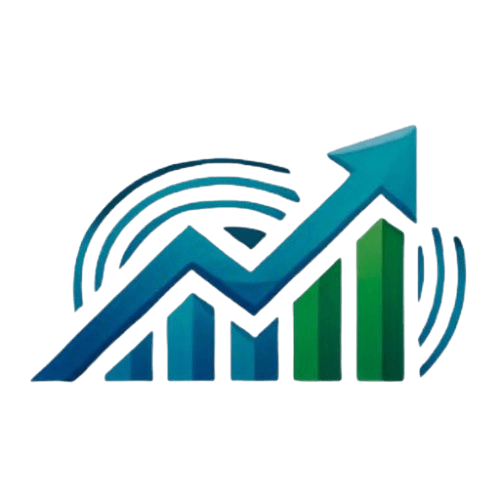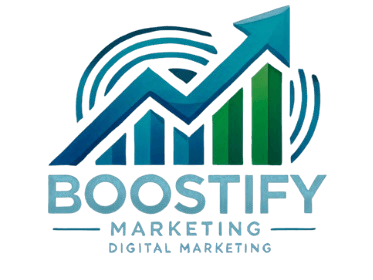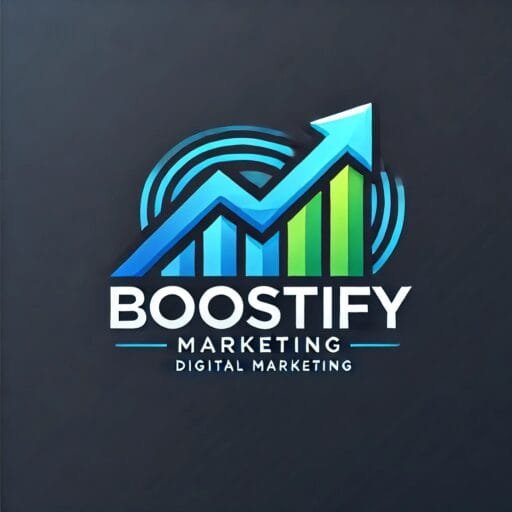
Top Emerging LLMs to Watch in 2025
Emerging LLM Models to Watch in 2025
Large Language Models (LLMs) are transforming the AI landscape. These models are designed to understand and generate human language.
In 2025, new LLMs will push the boundaries of AI capabilities. They promise to be more efficient and accurate than ever before.
LLMs are built using neural networks, specifically transformer architectures. This technology allows them to process vast amounts of data.
The best LLMs can perform tasks like translation, summarization, and question-answering with high accuracy. They are versatile and adaptable.
Top companies like OpenAI, Google, and Microsoft are leading the charge in LLM development. Their innovations are setting new standards.
LLMs are not just about text. They can generate code, music, and even art. This makes them invaluable in creative industries.
Ethical considerations are crucial in LLM development. Issues like bias and data privacy are being addressed.
The future of LLMs is bright, with more personalized and context-aware models on the horizon
What Are LLMs? Understanding the Basics
LLM stands for Large Language Model. It’s a type of AI that’s designed to understand and produce human language. These models are reshaping how machines interact with text and speech.
At their core, LLMs are powered by neural networks. These networks simulate the way human brains process language. They are particularly noted for their vast capabilities and intricate patterns.
A key technology underlying LLMs is the transformer architecture. This technology enables models to prioritize and pay attention to relevant words in a sentence. It’s a breakthrough that has dramatically improved language comprehension by machines.
LLMs have a wide range of applications. They are used in chatbots, virtual assistants, and many other interactive tools. Their versatility is unmatched.
Here are some fundamental features of LLMs:
- They predict the next word in a sequence.
- LLMs require a massive amount of data for training.
- They can generalize knowledge across different tasks.
The impact of LLMs is far-reaching. Their contributions to fields like customer service and content creation are substantial.
How Do LLMs Work? Key Technologies Explained
Large Language Models operate by predicting sequences of words. They analyze massive datasets to understand language patterns and structures. The process they use is complex yet powerful.
A fundamental technology in LLMs is the transformer architecture. This design uses mechanisms called “attention mechanisms.” These mechanisms allow the model to focus on specific words or phrases in input data, improving understanding.
Neural networks are crucial to LLM functions. These networks simulate human brain processes. They consist of layers, each learning a different data aspect. This structure enables them to identify complex patterns in data.
Training LLMs requires vast amounts of text data. This data helps the models learn context, syntax, and semantic relationships. Such comprehensive training supports their multifaceted capabilities.
The models use GPUs and TPUs for processing. These units provide the necessary computational power for managing complex computations. They are essential in processing and making sense of large datasets.
Key technologies facilitating LLM operations include:
- Transformers for efficient data processing
- Attention mechanisms to focus on relevant data points
- Neural networks to simulate human-like processing
Understanding how LLMs function is crucial for leveraging their capabilities. They are transforming industries by making machines smarter and more intuitive.
The Evolution of Large Language Models: 2020–2024
The period from 2020 to 2024 saw unprecedented advancements in LLM technology. This era was marked by rapid development and deployment of powerful models. Researchers focused on expanding capabilities and improving efficiency.
During these years, significant models like GPT-3 and BERT emerged. These models set new benchmarks for language understanding and generation. They pushed the boundaries of natural language processing.
Key innovations included improved training methods and larger datasets. These advancements allowed LLMs to become more accurate and context-aware. Improved scalability enabled wider adoption across industries.
Significant achievements of the period included:
- Development of multilingual capabilities
- Enhanced summarization and translation skills
- Better contextual understanding in diverse applications
The continuous evolution paved the way for more sophisticated LLM models. These developments not only enhanced AI capabilities but also expanded their application range. The stage was set for even more advanced LLMs in 2025.
Top LLM Models to Watch in 2025
As 2025 approaches, the LLM landscape promises exciting innovations. Notably, new models are anticipated to enhance the AI field dramatically. They are poised to offer improved performance and novel capabilities.
These models are expected to tackle current limitations in language understanding. They focus on efficiency, accuracy, and ethical AI usage. The integration with other AI technologies will be a key feature.
The top models to watch leverage cutting-edge research. They are set to lead in both innovation and market share. Their deployment across various sectors will redefine AI’s role in society.
Several emerging LLMs are garnering attention in 2025. Each of these stands out due to distinct features and applications. This year, watch for these innovations reshaping AI dynamics.
1. GPT-5 (OpenAI)
OpenAI’s GPT-5 is generating considerable buzz. Expected to launch with superior capabilities, it aims to set a new standard in language models. Anticipations include enhanced contextual understanding and quicker responses.
GPT-5 will leverage improved transformer architecture. It focuses on scalability and efficiency, making it versatile across industries. Its applications may extend from entertainment to scientific research.
Key features to anticipate in GPT-5:
- Advanced contextual reasoning
- Reduced computational resource needs
- Enhanced multimodal capabilities
These advancements intend to mitigate prior limitations and broaden applicability. OpenAI’s commitment to ethical AI development remains central to GPT-5’s evolution. This makes it a frontrunner in 2025’s LLM landscape.
2. Gemini 2.5 (Google DeepMind)
Google DeepMind’s Gemini 2.5 is another model to watch. Building upon its predecessors, it aims to elevate language processing capabilities. The model focuses on integrating broader datasets for better accuracy.
Gemini 2.5 is designed to improve contextual predictions. It uses advanced neural network architectures to enhance language understanding. This positions it well for tasks requiring deep comprehension.
Features that set Gemini 2.5 apart include:
- Broader linguistic datasets
- Improved contextual accuracy
- Integration with Google’s AI ecosystems
These features ensure Gemini 2.5’s adaptability to diverse AI tasks. Google DeepMind aims for impactful applications in technology and beyond. This secures Gemini 2.5’s role as a top LLM in 2025.
3. Claude 4 (Anthropic)
Anthropic’s Claude 4 is a promising LLM contender for 2025. Designed with an emphasis on safety and ethical AI use, it focuses on mitigating risks. This involves implementing robust checks and balances within its framework.
Claude 4 seeks to enhance decision-making processes. It prioritizes contextual understanding, making it suitable for sensitive applications. Its design emphasizes cautious interpretation and interaction.
Distinctive aspects of Claude 4:
- Robust ethical guidelines
- Emphasis on safe AI interactions
- Enhanced decision-making algorithms
By focusing on ethical considerations, Claude 4 targets comprehensive AI solutions. Its development highlights the need for responsible AI deployment across sectors.
4. Llama 4 (Meta)
Meta’s Llama 4 is another significant entrant in 2025’s LLM scene. It promises enhanced user interaction capabilities, leveraging Meta’s extensive data network. Llama 4 aims at refining real-time processing.
The focus on user engagement makes Llama 4 ideal for social media applications. It strives to deliver seamless user experiences via improved data handling and response accuracy.
Key innovations in Llama 4:
- Real-time data processing improvements
- Enhanced user interaction features
- Robust integration with Meta’s platforms
These components solidify Llama 4’s role in enhancing digital communication. Meta focuses on bringing more personalized AI experiences to users via this model.
5. Mistral Large 2 (Mistral AI)
Mistral AI’s Mistral Large 2 aims to redefine creative outputs. This model emphasizes creativity in AI-generated content, expanding possibilities in art and media. It focuses on intricate pattern recognition and generation.
Mistral Large 2 leverages advanced neural network algorithms. These allow for complex creative processes, making it an asset in art and entertainment industries. This unique focus sets it apart from other models.
Key aspects of Mistral Large 2:
- High-level creative pattern recognition
- AI-generated content enhancement
- Specialized algorithms for diverse media
Such innovations aim to revolutionize AI contributions to creative fields. Mistral Large 2 will play a pivotal role in expanding AI’s creative horizons.
6. Grok-4 (xAI)
xAI’s Grok-4 enters with a focus on practical problem-solving. This model emphasizes understanding and interpreting complex data. It aims to offer solutions in scientific and technical contexts.
Grok-4’s design prioritizes logical frameworks and data integrity. Its applications span from engineering to data analysis, driving real-world impact. It intends to streamline complex problem-solving processes.
Notable features of Grok-4 include:
- Enhanced logical reasoning
- Sophisticated data interpretation
- Applications in technical fields
Grok-4 is tailored to meet the needs of precise data-driven industries. xAI’s innovative approach makes this model essential in 2025’s AI advancements.
7. Command R+ (Cohere)
Cohere’s Command R+ is focused on command-driven operations. This model is designed for efficiency in executing user instructions. It tailors itself to tasks needing direct and accurate responses.
Command R+ optimizes task execution by rapidly understanding commands. It provides significant value in areas like customer service and operational automation. Its streamlined interface enhances usability.
Distinct features of Command R+:
- Direct command execution proficiency
- Enhanced response accuracy
- Usability in automation tasks
Cohere’s model emphasizes precision and reliability in performance. This makes it crucial for businesses prioritizing efficiency and customer satisfaction.
8. Stable LM 2 (Stability AI)
Stability AI’s Stable LM 2 aims to provide stable and reliable outputs. The model prioritizes minimizing variability in AI responses. It offers consistent performance for businesses requiring reliability.
Stable LM 2 is built for tasks demanding uniform output. Its consistency is crucial for industries like finance and logistics. It ensures that fluctuations in responses are significantly reduced.
Key features of Stable LM 2:
- Reliable output consistency
- Suitability for high-stake industries
- Simplified integration with existing systems
This model’s focus on reliability ensures its adoption in sectors where stability is key. Stability AI’s design principles make this an essential tool in 2025.
9. Phi-3 (Microsoft)
Microsoft’s Phi-3 is set to innovate industry-specific AI solutions. It focuses on providing tailored AI solutions to various sectors, leveraging Microsoft’s vast technological infrastructure.
Phi-3 integrates seamlessly with Microsoft products. This ensures enhanced utility and performance. It is designed to offer targeted solutions for enterprise-level applications.
Distinct innovations in Phi-3:
- Industry-specific AI tailoring
- Seamless integration with Microsoft products
- Enhanced performance for enterprise applications
By aligning with Microsoft’s diverse product suite, Phi-3 stands out in the LLM space. It’s a model designed for efficient, sector-specific solutions in 2025.
10. DBRX (Databricks)
Databricks’ DBRX focuses on data-driven AI enhancements. It’s designed for handling extensive data analytics and processing tasks efficiently. The model’s application spans across data-intensive industries.
DBRX leverages Databricks’ data management expertise. This AI’s focus is on delivering insightful analytics rapidly. It is tailored for industries needing comprehensive data insights.
Key components of DBRX:
- Advanced data analytics capabilities
- Efficient handling of large data sets
- Applications in data-driven sectors
Databricks’ innovation with DBRX provides a robust platform for AI in data analytics. It’s tailored for sectors requiring intensive data manipulation and insight generation.All ChatGPT, Llama, and Other Major LLMs: 2025 List
The landscape of large language models in 2025 is diverse and rapidly evolving. Major models like ChatGPT and Llama continue to lead in innovation. They’ve set benchmarks in language processing capabilities.
In 2025, these models are expected to push boundaries further. Improved accuracy and multimodal capabilities are anticipated features. They will likely offer new functionalities beyond text generation.
The list of noteworthy LLMs includes both new contenders and refined classics. Each brings unique enhancements and features. These models focus on different aspects of AI applications.
Prominent 2025 LLMs:
- ChatGPT series
- Llama models
- State-of-the-art GPT versions
- Next-gen Claude from Anthropic
Their continued evolution suggests a future where AI is more interactive and insightful. These models are poised to redefine AI applications across numerous fields.
What Makes an LLM “Best”? Key Criteria for 2025
Determining the “best” LLM involves several critical factors. Efficiency and adaptability in real-world tasks rank high. These models must perform reliably in diverse applications.
Scalability is another crucial aspect. An ideal LLM can manage increasing demands and remain effective. This ensures it handles diverse data inputs with ease.
Integration capabilities also define superior LLMs. The best models work well with existing platforms and technologies. Seamless integration amplifies their utility across fields.
Ethical considerations are increasingly prominent. Responsible data usage and unbiased outputs are essential. They help prevent potential pitfalls in AI deployment.
Key Criteria for 2025 LLMs:
- Performance efficiency
- Scalability and adaptability
- Integration ease
- Ethical compliance
These attributes ensure LLMs not only function well but also deliver ethical and scalable solutions. The focus remains on advancing AI while prioritizing responsible usLLM Companies Leading the Market
As the demand for large language models grows, several companies are at the forefront. These firms are investing significantly in AI research and development. They are setting new standards in the industry.
OpenAI is a leader among LLM developers. Known for its innovation, OpenAI continues to push boundaries with state-of-the-art models. Their work on GPT series has revolutionized natural language processing.
Google DeepMind is another major player. With substantial resources, they explore the depths of AI’s potential. Their focus is not just on developing robust LLMs but also on ethical AI frameworks.
Other major contenders include Microsoft and Meta. These companies contribute extensively to AI advancements. Their collaborative efforts are crucial to the future trajectory of LLM technology.
Leading LLM Companies:
- OpenAI
- Google DeepMind
- Microsoft
- Meta
These entities are pivotal in driving LLM advancements. Their work influences the future landscape of AI and machine learning.
What Are LLMs Good At? Applications in 2025
In 2025, Large Language Models (LLMs) excel across diverse applications. They are influential in enhancing productivity and efficiency in numerous fields. Their capabilities extend beyond basic text generation.
LLMs are pivotal in customer service automation. By understanding and responding to queries accurately, they transform customer experience. Their role is crucial in reducing human resource requirements.
In healthcare, LLMs assist in diagnosing and personalizing patient care. These models analyze extensive medical data, facilitating informed decisions. They contribute to improved patient outcomes and optimized treatment plans.
Moreover, creative industries harness LLMs for content creation. From generating art to music compositions, their applications are limitless. LLMs are essential in bridging creativity with technology.
Key Applications of LLMs in 2025:
- Customer Service Automation
- Healthcare Analysis
- Content Creation
These applications illustrate the versatility and potential of LLMs in modern society.
Beyond Text: Multimodal and Creative LLMs
The future of LLMs goes beyond text, branching into multimodal capabilities. These models combine text, images, and sounds seamlessly. They redefine human-AI interaction by being more versatile and interactive.
Creativity takes center stage with these advancements. LLMs can generate imaginative stories and compose melodies. They inspire artists and writers, acting as collaborative partners in creative processes.
In education, multimodal LLMs personalize learning experiences. They adapt to students’ styles, offering diverse materials like video and audio content. This approach enhances engagement and comprehension across subjects.
Features of Multimodal and Creative LLMs:
- Integration of Text, Image, and Sound
- Enhanced Creativity in Arts and Writing
- Personalized Learning Experiences
These breakthroughs signify a new era for AI models, where creativity meets technology.
Challenges and Limitations of LLMs in 2025
Despite their promise, LLMs face significant challenges. These obstacles constrain their widespread application. Ethical issues like bias and misinformation persist in AI outputs.
Power demands of LLMs cannot be overlooked. Large models require substantial computational resources, which is costly and environmentally demanding. Balancing efficiency with scale becomes paramount.
Privacy concerns also arise with data-driven models. Safeguarding user information while utilizing vast datasets remains a pivotal task. Ensuring data privacy without hampering performance is complex yet essential.
Key Limitations of LLMs:
- Ethical Challenges: Bias and Misinformation
- High Computational Costs
- Privacy and Data Security Issues
These challenges highlight areas for improvement. Addressing them will make LLMs more reliable and ethically sound.
The Future of LLMs: Trends and Predictions
Looking ahead, LLMs show great promise. Future models will likely be more efficient and versatile. Expectations include better context understanding and adaptability.
Integration with other AI technologies is on the horizon. This fusion promises enhanced capabilities and new applications. The synergy could redefine AI functionalities.
We foresee a shift towards personalized and context-aware models. Users will enjoy interactions tailored to their needs. This personalization could transform user experiences.
Emerging Trends:
- Enhanced Efficiency and Versatility
- Integration with Other AI Technologies
- Shift to Personalization and Context Awareness
These trends indicate exciting developments in LLMs. Keeping up with these changes will be crucial for leveraging their full potential.
Frequently Asked Questions About LLMs
Many people wonder what LLM stands for in AI. LLM means Large Language Model. It refers to AI designed for understanding and generating language.
Another common query is how LLMs work. They use neural networks for processing data and predicting language sequences. This technology enables nuanced AI interactions.
People often ask what makes an LLM the best. The best LLMs balance performance and ethical considerations, ensuring accuracy without bias.
Are all LLMs neural networks? Yes, most LLMs utilize neural networks, particularly transformers. These models mimic human-like language comprehension.
Some wonder about the number of existing LLMs. There are many models, each unique in capacity and use. New models are constantly being developed.
Key FAQs:
- What does LLM stand for in AI?
- Are LLMs based on neural networks?
- How do LLMs predict text?
Conclusion: The Impact of Emerging LLMs in 2025 and Beyond
The year 2025 marks a pivotal moment for Large Language Models (LLMs). Emerging models are poised to revolutionize industries by enhancing automation and insight generation.
These advancements promise to refine how we interact with technology. More personalized and efficient systems are becoming feasible, bridging human and machine understanding seamlessly.
However, as capabilities expand, so do ethical challenges. Developers must address issues of bias and data privacy while improving performance standards. Balancing innovation with ethics will be crucial in this evolution.
Ultimately, the future of LLMs holds significant potential to transform society. With strategic development, these models can lead us into a new era of intelligent and responsive AI solutions.




